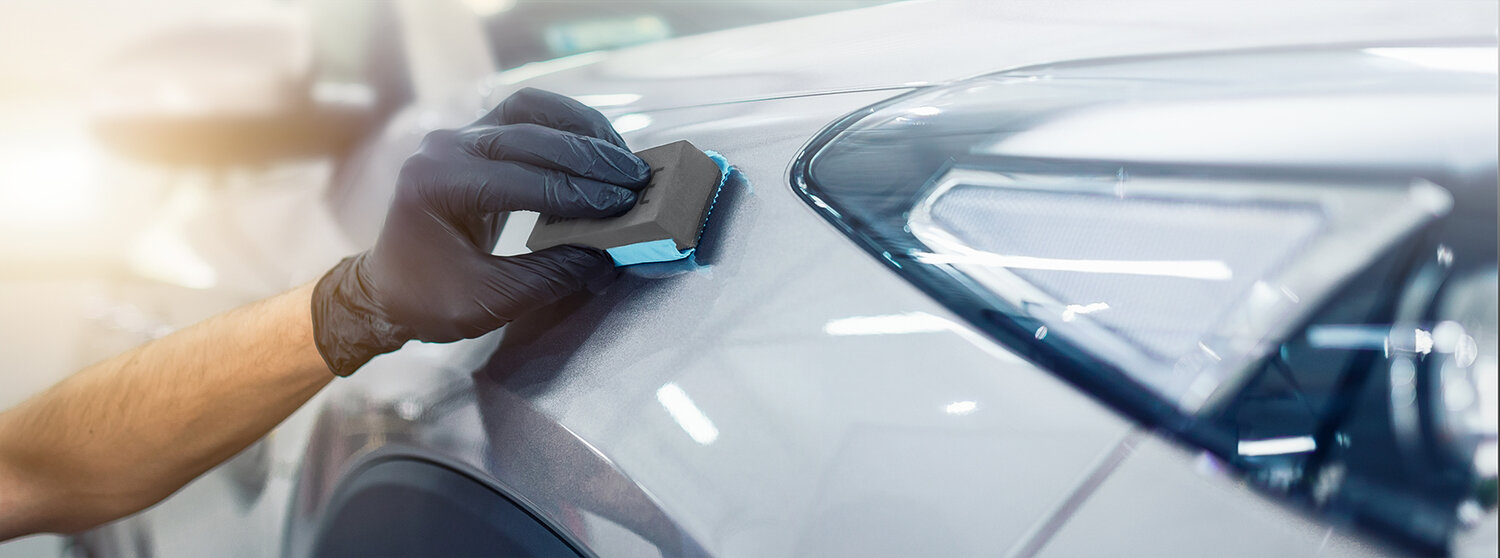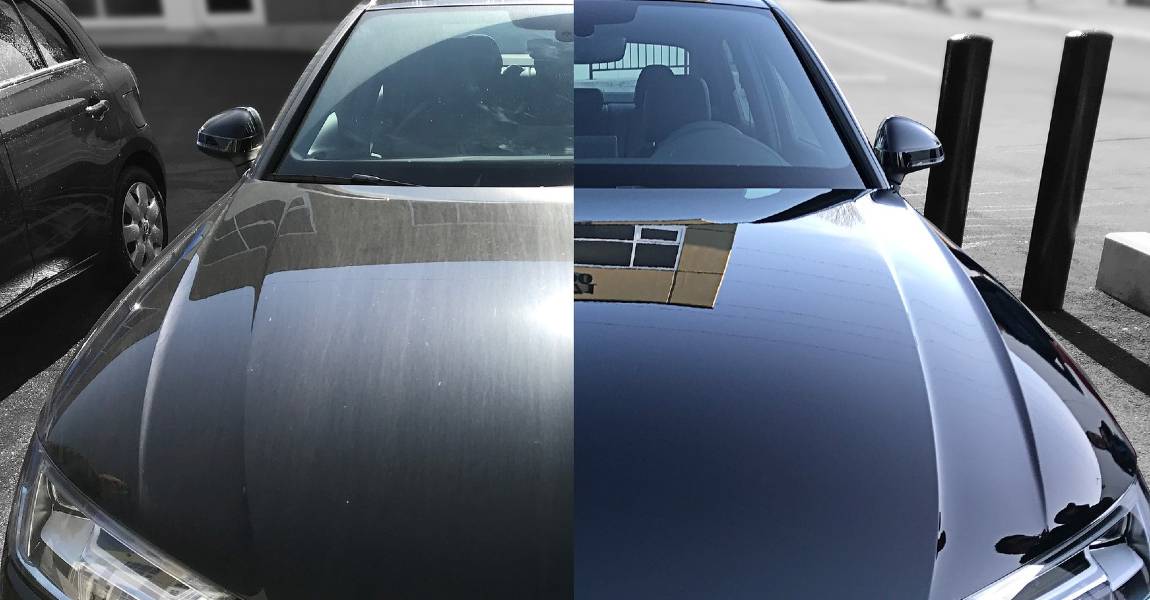The Cost of Ceramic Coating: Is It Worth the Financial investment?
The Cost of Ceramic Coating: Is It Worth the Financial investment?
Blog Article
The Significance of Ceramic Coating: Protecting Your Cars and truck's Outside With Precision
In a period where preserving the aesthetic and useful honesty of your car is vital, ceramic layer becomes a pivotal service. This safety layer not just defend against ecological hardships but additionally boosts the visual appeal of your vehicle. With its one-of-a-kind bonding properties, ceramic coating supplies a degree of defense that far exceeds traditional waxing approaches. Exactly how precisely does it attain such impressive outcomes? As we check out the nuances of its application and compare it to other alternatives, one can not aid but wonder regarding the specifics that make this technology crucial for modern cars and truck treatment.
Advantages of Ceramic Coating
When it comes to protecting a car's visual allure, ceramic layer offers considerable advantages. By forming a semi-permanent bond with the vehicle's paint, ceramic layers effectively protect against oxidation and fading, making certain that the car keeps a shiny, showroom-like coating for an extensive period.
Along with its protective high qualities, ceramic layer provides remarkable hydrophobic residential or commercial properties, causing water and various other fluids to bead off effortlessly. This attribute simplifies the cleaning process, as dirt and particles are much less most likely to abide by the surface, minimizing the frequency and initiative needed for upkeep. The covering's resistance to chemical discolorations from acidic pollutants like bird droppings and tree sap is another notable benefit, reducing potential paint damage.
Ceramic finishings additionally boost scratch resistance, offering a layer that can soak up small abrasions and swirl marks. This attribute is specifically helpful in maintaining an immaculate surface, decreasing the probability of noticeable flaws and protecting the honesty of the vehicle's paintwork over time.

Exactly How Ceramic Finishing Functions
Recognizing the technicians behind ceramic finish reveals its efficiency as a safety service for automobiles. Ceramic finishings are basically liquid polymer applications that chemically bond with a car's factory paint, developing a protective layer. This layer works as a barrier against environmental impurities such as gunk, dirt, and ultraviolet rays, which can break down a cars and truck's outside in time. The key component in ceramic finishing is silicon dioxide (SiO2), which stems from quartz crystals and is understood for its exceptional solidity and sturdiness.
Application of ceramic finish involves a precise process. The automobile's surface have to be completely cleaned and sanitized to make sure optimal attachment. Once used, the liquid polymer develops a semi-permanent bond with the paint, hardening right into a transparent, sturdy shield. This shield boosts the automobile's gloss and hydrophobic residential properties, facilitating less complicated cleansing by creating water and impurities to bead and slide off easily.
Moreover, the layer's molecular framework offers resistance to minor scratches and chemical discolorations. Unlike waxes or sealers that sit on top of the paint, ceramic layers incorporate with the surface, offering resilient security. This assimilation is basic to its effectiveness, guaranteeing the car's finish remains immaculate for many years.
Comparing Ceramic Coating to Alternatives
In the realm of vehicle defense, ceramic finishing stands as a powerful choice when compared to standard alternatives such as sealants and waxes. While waxes use a short-term glossy surface, typically lasting just a few weeks to months, ceramic finishings provide a longer-lasting remedy, typically enduring for many years. This resilience is attributed to the chemical bonding that happens when ceramic coverings are applied, developing a strong layer that is immune to ecological risks.
Contrastingly, sealants, although more resilient than waxes, still disappoint the robust security offered by ceramic finishings. Sealants can generally last for as much as a year, giving a synthetic shield against particular components. They lack the superior hydrophobic residential webpage or commercial properties and UV security that ceramic finishings deliver.
Moreover, ceramic coatings offer boosted scrape resistance, which neither waxes neither sealants can properly match. In summary, while traditional waxes and sealers provide fundamental defense, ceramic finishings present a thorough, long-lasting service that substantially preserves the lorry and enhances's exterior click here for info finish.
Application Refine Described
Using ceramic finish to a car requires a thorough procedure to ensure optimum outcomes and resilience. The first step involves extensively cleaning up the car's surface area to eliminate dust, grease, and previous waxes. This is essential for ensuring the coating sticks correctly. A pH-neutral hair shampoo and a clay bar treatment are usually made use of to accomplish a beautiful surface. When cleaned, the car is dried and brightened to remove any blemishes, as any kind of existing scratches or swirls can end up being much more obvious after the coating is applied.
Complying with surface area preparation, the application of the ceramic coating starts. The coating is typically applied in a climate-controlled atmosphere to stop dirt fragments from picking the freshly cleaned surface. Using an applicator pad, the ceramic layer is applied in little areas to guarantee also coverage. It is vital to adhere to the manufacturer's guidelines pertaining to the ideal healing time and application density.
After application, the covering calls for a specific healing duration, during which the car must be protected from water and impurities. This healing process can differ depending on the item yet normally varies from 24 to two days. Eventually, this thorough process is pivotal in achieving a resistant and shiny finish.
Maintenance Tips for Longevity
To preserve the long life of a ceramic coating, adherence to a regimented maintenance routine is crucial. Stay clear of automatic cars and truck cleans, as their harsh brushes can jeopardize the finish's honesty.
Post-wash, drying the automobile with a clean microfiber towel protects against water places that may degrade the covering with time. Furthermore, apply a ceramic finish booster every couple of months. These boosters strengthen the hydrophobic buildings and enhance the covering's protective capacities, ensuring it remains efficient versus contaminants.
Remember that vehicle parking locations play a critical role in maintenance. ceramic coating. Whenever possible, park in shaded areas to reduce UV exposure, which can progressively deteriorate the coating. For lasting storage space, consider utilizing an auto cover for added security against environmental elements
Final Thought
Finally, ceramic finishing works as a crucial protective layer for vehicle websites outsides, supplying resilient defense against environmental variables such as dirt, crud, and UV rays. By creating a semi-permanent bond with the paint, it enhances aesthetic appeal while protecting the automobile's value. Its hydrophobic properties help with much easier maintenance, identifying it from alternative protective techniques. Recognizing the application process and sticking to upkeep suggestions are necessary for taking full advantage of the durability and effectiveness of ceramic layer.
When it comes to protecting a vehicle's visual allure, ceramic coating offers considerable benefits. By forming a semi-permanent bond with the automobile's paint, ceramic coverings successfully avoid oxidation and fading, guaranteeing that the automobile preserves a glossy, showroom-like finish for an extended duration. Ceramic finishings are basically fluid polymer applications that chemically bond with a vehicle's factory paint, developing a protective layer. In summary, while traditional waxes and sealers offer fundamental protection, ceramic coverings present an extensive, long-term remedy that considerably maintains the car and enhances's outside finish.

Report this page